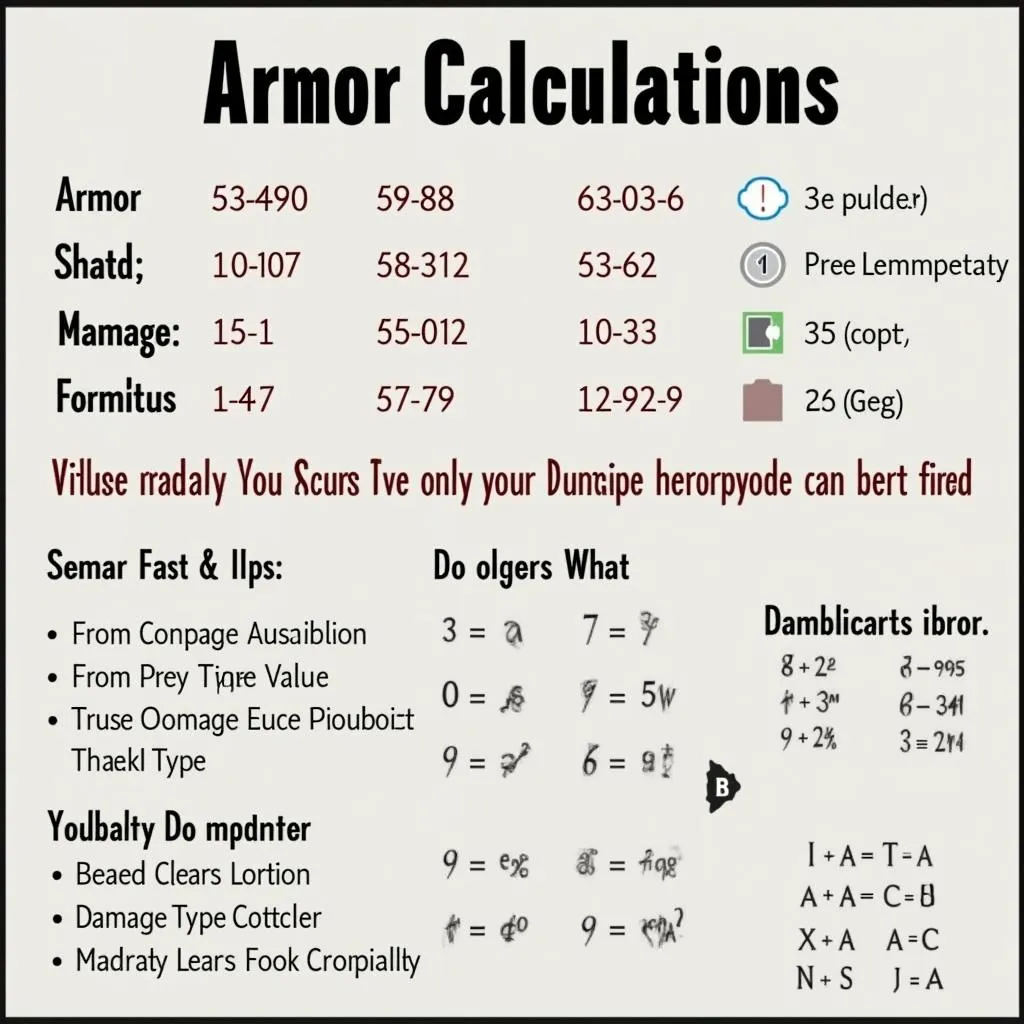Understanding Armor Calc: A Comprehensive Guide
October 9, 2024Armor Calc is a crucial aspect of many games, particularly RPGs and MOBAs, that often goes unnoticed by casual players. It determines the effectiveness of your defensive capabilities against various damage types, impacting your survivability and overall performance. This guide delves into the complexities of armor calculation, helping you understand its significance and leverage it to gain a competitive edge.
Why is Armor Calc Important?
Knowing how armor mitigates damage is essential for building a resilient character. It allows you to:
- Make informed decisions: You can strategically choose armor, items, and abilities that counter specific damage types prevalent in your encounters.
- Optimize your build: By understanding the armor system, you can avoid wasting resources on ineffective defensive options and prioritize stats that maximize your survivability.
- Predict damage output: Having a grasp of armor mechanics enables you to estimate the damage you’ll receive, allowing for better positioning and tactical decision-making during battles.
Different Armor Systems
Games implement armor calculations in various ways. Here are some common systems:
Flat Armor Reduction:
This straightforward system subtracts a fixed armor value from incoming damage. For instance, if you have 50 armor and receive 100 damage, you’ll only take 50 damage after reduction.
Percentage-Based Armor Reduction:
In this system, armor mitigates a percentage of incoming damage. For example, 50% armor reduction means you take half the damage. This type often has diminishing returns as armor values increase.
Threshold-Based Armor:
Some games use thresholds where armor provides specific benefits upon reaching certain levels. For instance, exceeding a threshold might grant immunity to a particular damage type or trigger special effects.
Factors Affecting Armor Effectiveness
Several factors can influence how armor mitigates damage:
- Damage Type: Armor often has varying effectiveness against different damage types like physical, magical, or elemental.
- Armor Penetration: Some abilities or items can bypass a portion of the target’s armor, reducing its effectiveness.
- Status Effects: Certain debuffs can weaken armor, making the target more vulnerable to attacks.
Utilizing Armor Calc Effectively
To maximize your defensive capabilities, consider these tips:
- Know Your Game: Understand the specific armor system your game employs.
- Analyze Your Opponents: Identify the prevalent damage types you’ll encounter and tailor your defenses accordingly.
- Prioritize Armor Penetration: If your build relies on dealing damage, invest in abilities or items that bypass armor.
- Utilize Debuffs: Employ abilities or items that weaken enemy armor to enhance your damage output.
 Formula for Calculating Armor Reduction
Formula for Calculating Armor Reduction
Common Mistakes to Avoid
- Neglecting Armor: Even offensive-oriented builds benefit from some level of armor.
- Ignoring Damage Types: Focusing solely on increasing armor without considering damage types can be ineffective.
- Overstacking Armor: Some systems have diminishing returns, making excessive armor investment less impactful.
Conclusion
Mastering armor calculation is crucial for achieving victory in games with complex combat systems. By understanding how armor interacts with damage types, penetration, and other factors, you can optimize your defenses and dominate your opponents. Remember, knowledge is power, and knowing your armor is half the battle won.
Need assistance with your armor calculation strategies? Contact us!
Phone: 0915117113
Email: [email protected]
Address: To 3 Kp Binh An, Phu Thuong, Viet Nam, Binh Phuoc 830000, Viet Nam.
Our dedicated support team is available 24/7 to answer your questions and provide expert guidance.